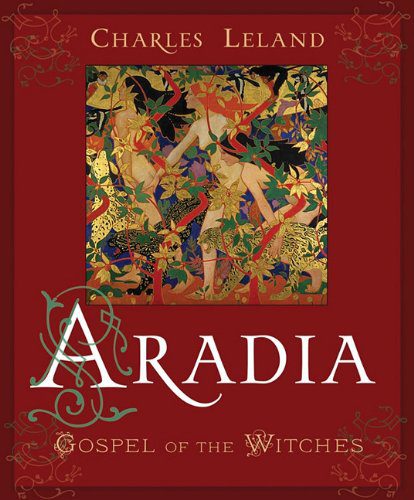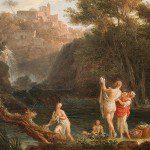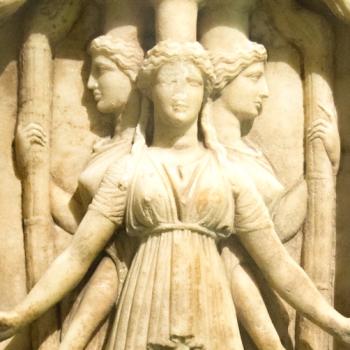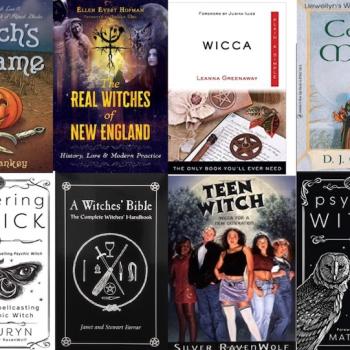ARADIA OR THE GOSPEL OF THE WITCHES
There are many books in the running for “most influential Witch book” of all time, but I think the crown goes to Charles Godfrey Leland’s Aradia, Or the Gospel of the Witches. ). Leland’s book allegedly contains some of the mythology, spellwork, and rituals of an Italian Witch-cult said to still be operating in Italy at the time of publication.
Leland’s source for Aradia was a young woman known in his writings as Maddalena, though her real name was most likely Margherita. (1) We don’t know much about Maddalena, but she most certainly existed as some of Leland’s friends attested to interacting with her. The material that makes up Aradia was written down by Maddalena and then given to Leland over the course of several years. Sadly, none of that correspondence exists today, but we do have some of Leland’s notes translating Maddalena’s Italian into English. Aradia does not contain all of the material she gave to Leland, but it does contain much of it.
Unlike today’s Witchcraft the magickal system written about by Leland is extremely adversarial. An early version of what would come to be known as The Charge of the Goddess concludes with the line “until the last your oppressors shall be dead.” The mythology in Aradia is an interesting mix of both ancient pagan and Christian. The parents of the goddess Aradia are the Roman Diana (who has long been associated with witches) and a figure known to us from the Bible, Lucifer.
While Aradia has become a very popular goddess in Modern Witchcraft circles, she’s completely absent from the written record before 1899. Some scholars have linked her to the historical figure Herodias (who was partially responsible for the death of John the Baptist), who was seen as a spectral-witch like figure in various parts of Italy. Legends of Herodias were often intermingled with those of the goddess of witchcraft, Diana. (2)

Aradia emerging as a goddess during the early Renaissance makes a great deal of sense considering the material that makes up The Gospel of the Witches. There’s nothing in the text suggesting that Maddalena’s material is ancient. If it represents an Italian Witch tradition (which I think is likely), that tradition was no more than a few hundred years old by the time Leland wrote about it in the 1890’s. There’s also no evidence that Magdalena’s witch group was widespread, and now 120 years later she remains our only witness to its existence. (There have been many authors who have claimed some sort of link to the Witches found in Aradia, I don’t find any of those claims very credible, but I respect their work as fascinating re-imaginings and additions to the original.)
Though evidence of Maddalena’s witch-group is a bit lacking, the magickal material found in Aradia is not unique to that work. Magickal systems often exist separate from religious tradition, and even today there are still individuals in Italy who are using spells and incantations similar to those found in Aradia. (3) I’m of the opinion that the Witchcraft found in Aradia represents a real magickal and spiritual system, though it may not be as ancient as some would like.
The antiquity or “truth” of Aradia is ultimately of little consequence. What’s important is just how influential it’s been over the last 120 years. I think it’s one of the most important books of the Witchcraft revival and people are still using bits of it in ritual. It’s an often overlooked classic and directly influenced Gerald Gardner and the thousands (and now millions) of Witches who came after him.
Ideas From Aradia In Today’s Witchcraft
The religious Witchcraft alleged to have been practiced in the Middle Ages and early Modern Period was generally focused on male deity. The leader of Witch ritual in Margaret Murray’s The Witch-Cult in Western Europe (1921) was a figure known as the Grand Magister, who was said to be the living embodiment of The Devil when her Witches gathered. More than just the Devil, Murray interpreted this figure as a corruption of a much older and much more pagan horned deity, today we’d call him The Horned God. But Aradia’s cosmology was radically different from Devil (and male god) centered Witchcraft. Aradia included both a goddess and a god (and their child, Aradia) and idea that was revolutionary, and one of the reasons Wiccan-Witchcraft has become so popular today.
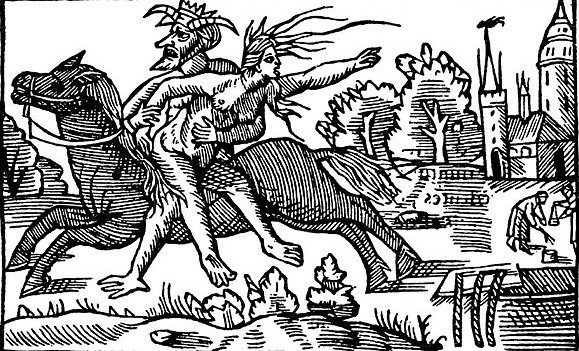
Women have always been accused of Witchcraft, and many ancient goddesses such as Diana were associated with it. But during the Witch Trials, the Witchcraft that most people believe existed was focused on a male deity (the Devil) and often had a male figure said to be leading the rites. The Witchcraft that first went public in the 1950’s was closer to the cosmology of Aradia than that of Margaret Murray’s Witch-Cult.
Not only did many of the ideas found in Aradia find a new home in Wiccan-Witchcraft, some of its words did too. Doreen Valiente’s Charge of the Goddess uses Aradia as a starting point, most specifically a treatise allegedly said by Diana to her followers, found in chapter one of Leland’s work. I tend to think of this as the proto-Charge of the Goddess:
“When I shall have departed from this world, whenever ye have need of anything, once in the month, and when the moon is full, ye shall assemble in some desert place, Or in a forest all together join to adore the potent spirit of your queen, my mother, great Diana. She who fain would learn all sorcery yet has not won its deepest secrets, then my mother will teach her, in truth all things as yet unknown. And ye shall all be freed from slavery, and so ye shall be free in everything; and as the sign that ye are truly free, ye shall be naked in your rites, both men and women also: this shall last until the last of your oppressors shall be dead. (And ye shall make the game of Benevento, extinguishing the lights, and after that shall hold your supper thus:)”
Though Aradia doesn’t contain a full ceremony that we might call “cakes and ale” wine and baked goods in a ritual setting are seen as important. The second chapter of Aradia is called “The Sabbat: Treguenda or Witch-Meeting–How to Consecrate the Supper” and contains lines such as: “You shall make cakes of meal, wine, salt, and honey in the shape of a (crescent or horned) moon . . .” the supper is later described in a way that certainly sounds like many Witch-covens today:
“And thus shall it be done: all shall sit down to the supper all naked, men and women, and, the feast over, they shall dance, sing, make music, and then love in the darkness, with all the lights extinguished: for it is the Spirit of Diana who extinguishes them, and so they will dance and make music in her praise.”
Chapter Eight of Aradia includes an invocation over wine in a drinking horn, a blessing that would not be out of place in my own circle:
“He who would have a good vintage and fine wine, should take a horn full of wine and with this go into the vineyards or farms wherever vines grow, and then drinking from the horn, say . . . .I drink, and yet it is not wine I drink, I drink the blood of Diana, Since from wine it has changed into her blood, And spread itself through all my growing vines, Whence it will give me good return in wines, Though even if good vintage should be mine . . . .”
The importance of Aradia and the goddess of the same name cannot be overstated.
Much of the material in this article comes from the book The Witch’s Book of Shadows by Jason Mankey (me!). Pick it up at your local metaphysical shop or online now!
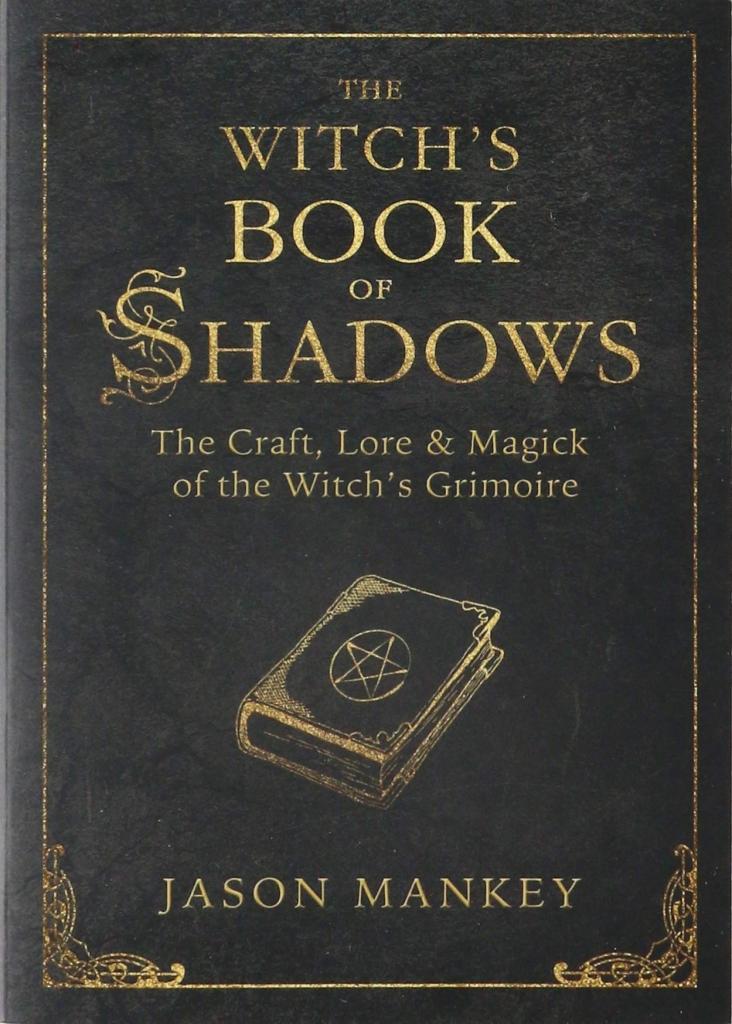
1. Mathiesen, Robert, Aradia: Or the Gospel of the Witches (A New Translation), Phoenix Publishing, 1998, page 30. This edition of Aradia includes a new translation of the text by Maria & Dana Pazzaglini, along with several essays that help to give the reader a better sense of Leland’s world. This is the definitive version of Aradia, though it sadly now only exists as an e-book.
2. The most comprehensive look at Aradia as an echo of Herodias can be found in the book Ten Years of Triumph of the Moon (A Collection of Essays), Hidden Publishing 2009. My brief paragraph summary comes from Sabina Magliocco’s article Aradia in Sardinia: The Archeology of a Folk Character.
3. Pazzaglini, Mario and Dina, Aradia or the Gospel of the Witches: A New Translation, pages 86-87. I cannot put into words how great and valuable this book is.


